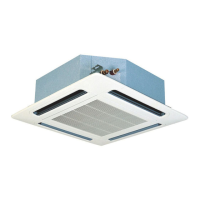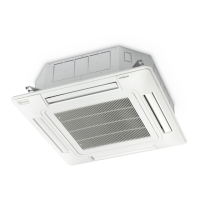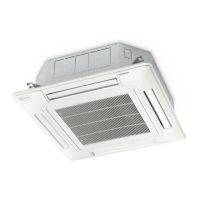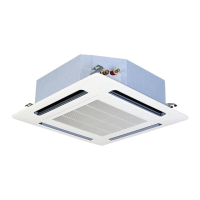Gas refrigerant pipes must always be separately insulated, using closed cell insulation foam designed especially for
refrigeration. This insulation foam, supplied by the installer, can be obtained in different formats. The most common is in
the form of sheets and rolls of tubes of different diameters.
Furthermore, all connections between the different sections of insulation tubes must be reinforced with adhesive tape of
the same characteristics.
Once all of the unit installation and adjustment work is complete, all threaded joints and valves must also be covered with
adhesive tape.
3.4.9 Refrigerant pipe suspension
Only suspend the refrigerant pipes at specific points of the building.
Whenever possible, avoid suspending them from parts subject to
structural movement, e.g. places close to expansion joints or outer
walls, etc.
Prevent the refrigerant pipes from touching weak parts of the
building, such as walls (non-structural), partition walls, ceilings, etc.
Otherwise, operating noise may be caused by pipe vibrations (pay
special attention in the case of short pipes).
A: points where the gas refrigerant pipes pass through the different
structural parts of the building.
B: indoor unit.
Use suitable suspension systems for refrigeration pipes or clamps
to suspend the pipes, as shown in the diagram.
3 Piping work and
refrigerant charge
88
SMGB0063 rev. 1 - 10/2010

